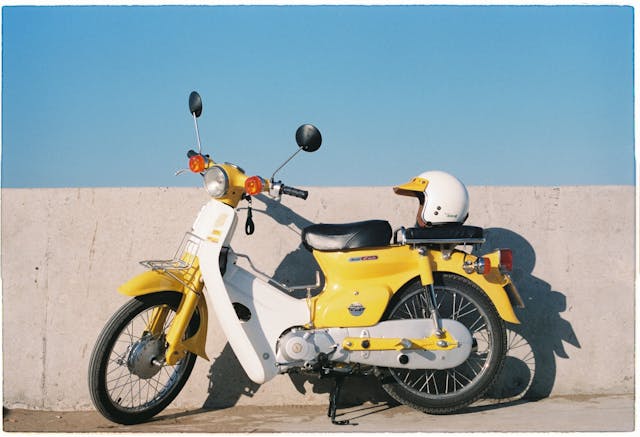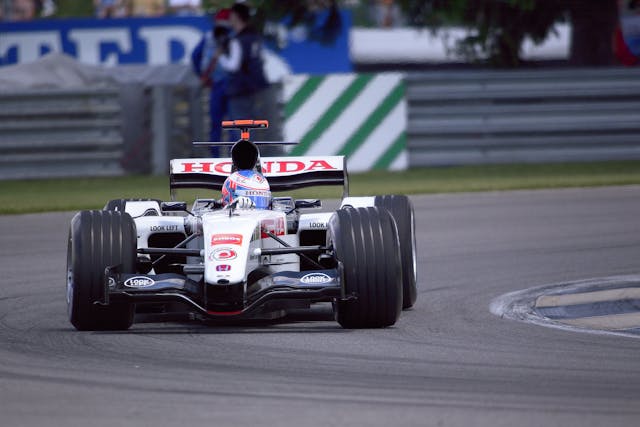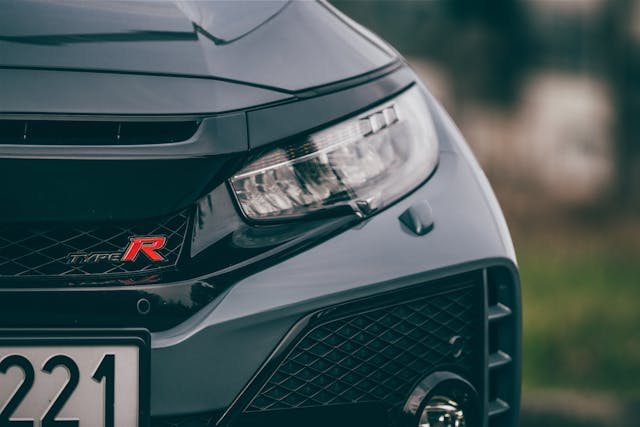Honda has built its brand on a foundation of innovation, reliability, and a deep understanding of its customers. The company’s marketing strategy reflects these core values and has played a significant role in its worldwide success. This blog post will explore Honda’s marketing strategy, highlighting key campaigns and tactics that have made the brand a household name.
Understanding Honda’s Brand Identity
At the heart of Honda’s marketing strategy is its brand identity. Honda positions itself as a company that produces high-quality, reliable, and innovative products. This identity is consistently communicated across all marketing channels and product lines. Honda’s slogan, “The Power of Dreams,” encapsulates the company’s philosophy and its commitment to pushing the boundaries of technology and engineering.
Honda’s marketing team ensures that every campaign, whether it’s for cars, motorcycles, or power equipment, reinforces this brand identity. The company uses a mix of traditional and digital marketing channels to reach its diverse customer base, from television commercials and print ads to social media and experiential marketing.

Key Components of Honda’s Marketing Strategy
1. Innovation and Technology
Honda’s reputation for innovation is a cornerstone of its marketing strategy. The company consistently highlights its technological advancements and engineering excellence in its campaigns. This focus on innovation not only differentiates Honda from its competitors but also appeals to a broad audience of tech-savvy consumers.
For example, the “Honda Dream Garage” campaign showcases the company’s latest vehicles and technologies in a virtual showroom. This interactive experience allows consumers to explore Honda’s products in detail, emphasizing the brand’s cutting-edge technology and design.
2. Customer-Centric Approach
Honda places a strong emphasis on understanding and meeting the needs of its customers. The company’s marketing strategy is heavily influenced by consumer insights and feedback. Honda conducts extensive market research to identify trends and preferences, ensuring that its products and campaigns resonate with its target audience.
The “Honda Loves You Back” campaign is a prime example of this customer-centric approach. Launched in 2012, the campaign featured real-life stories of Honda customers who had formed emotional connections with their vehicles. By highlighting these personal stories, Honda reinforced its commitment to customer satisfaction and loyalty.
3. Emotional Branding
Honda’s marketing strategy leverages emotional branding to create a strong connection with consumers. The company often uses storytelling in its campaigns to evoke emotions and build a deeper relationship with its audience. This approach helps to humanize the brand and make it more relatable.
The “Hands” commercial is a perfect illustration of Honda’s emotional branding strategy. The ad, which celebrated the company’s 65th anniversary, showcased the history of Honda’s innovations through a series of clever animations. The ad’s tagline, “Let’s see what curiosity can do,” emphasized Honda’s spirit of innovation and curiosity, resonating with viewers on an emotional level.
4. Integrated Marketing Communications
Honda employs an integrated marketing communications (IMC) approach to ensure consistency across all channels. This strategy involves coordinating various marketing activities, such as advertising, public relations, and digital marketing, to deliver a unified message.
The “Safety for Everyone” campaign is a notable example of Honda’s IMC strategy. This campaign, which highlights Honda’s commitment to safety, includes television commercials, print ads, social media content, and a dedicated microsite. By delivering a consistent message across multiple platforms, Honda effectively communicates its dedication to safety and builds trust with its audience.
5. Social Responsibility
Corporate social responsibility (CSR) is a key element of Honda’s marketing strategy. The company actively promotes its CSR initiatives, such as environmental sustainability and community engagement, to enhance its brand image and reputation.
Honda’s “Green Path” initiative is a testament to its commitment to sustainability. The initiative focuses on reducing the environmental impact of Honda’s products and operations. Honda’s marketing campaigns highlight the company’s efforts to develop eco-friendly technologies, such as hybrid and electric vehicles, and promote sustainable practices. By aligning its brand with environmental sustainability, Honda appeals to eco-conscious consumers and strengthens its reputation as a responsible company.
Highlighting Successful Campaigns
“The Power of Dreams”
One of Honda’s most iconic campaigns is “The Power of Dreams.” This campaign encapsulates Honda’s brand philosophy and its commitment to innovation and excellence. The campaign includes a series of commercials that highlight Honda’s achievements and future aspirations.
A standout commercial from this campaign is “The Impossible Dream,” which features a man embarking on a journey through various landscapes in different Honda vehicles. The ad, set to the tune of Andy Williams’ “The Impossible Dream,” showcases Honda’s wide range of products and reinforces the brand’s message of pursuing dreams and pushing boundaries.
“Hands”
The “Hands” commercial is another highly acclaimed campaign that celebrates Honda’s spirit of innovation. The ad features a pair of hands manipulating various Honda products, from motorcycles and cars to lawnmowers and robots. Through a series of clever transitions and animations, the commercial illustrates Honda’s history of innovation and creativity. The ad’s tagline, “Let’s see what curiosity can do,” perfectly encapsulates Honda’s commitment to exploring new ideas and technologies.
“Safety for Everyone”
Honda’s “Safety for Everyone” campaign underscores the company’s dedication to safety. The campaign includes a series of commercials that highlight Honda’s advanced safety features and technologies. One notable ad from this campaign is “Honda Dreamer,” which features a young girl dreaming about a world where everyone is safe. The ad emphasizes Honda’s commitment to safety and its efforts to create a safer driving experience for all.
“Honda Loves You Back”
The “Honda Loves You Back” campaign is a heartfelt initiative that celebrates the bond between Honda and its customers. The campaign features real-life stories of Honda customers who have experienced memorable moments with their vehicles. By showcasing these personal stories, Honda reinforces its commitment to customer satisfaction and loyalty. The campaign also includes surprise giveaways and events to thank customers for their support.
“Civic Nation”
The “Civic Nation” campaign, launched in 2016, aimed to rejuvenate the Honda Civic’s image and appeal to a younger audience. The campaign featured a series of commercials that highlighted the Civic’s modern design, advanced technology, and fun-to-drive nature. The ads were accompanied by a social media campaign that encouraged fans to share their Civic stories and experiences. By leveraging social media and user-generated content, Honda successfully engaged with a younger demographic and revitalized the Civic’s brand image.

Leveraging Digital and Social Media
In today’s digital age, Honda has effectively leveraged digital and social media platforms to reach and engage with its audience. The company uses a mix of content marketing, social media campaigns, and influencer partnerships to enhance its online presence and connect with consumers.
Content Marketing
Honda’s content marketing strategy focuses on creating valuable and engaging content that resonates with its audience. The company produces a variety of content, including blog posts, videos, and infographics, that highlight its products, innovations, and brand values. By providing informative and entertaining content, Honda builds trust and credibility with its audience.
Social Media Campaigns
Honda’s social media campaigns are designed to engage with consumers and foster a sense of community. The company actively uses platforms like Facebook, Instagram, Twitter, and YouTube to share content, interact with followers, and promote its products. Honda’s social media team ensures that the content is visually appealing, relevant, and aligned with the brand’s identity.
A notable social media campaign is the “Honda Stage” initiative, which features live performances and exclusive content from popular music artists. The campaign aims to connect with younger audiences by combining Honda’s passion for innovation with music and entertainment. By leveraging the power of social media and music, Honda successfully engages with a younger demographic and enhances its brand appeal.
Influencer Partnerships
Honda collaborates with influencers and brand ambassadors to amplify its marketing efforts and reach new audiences. The company partners with influencers who align with its brand values and have a strong following in relevant niches, such as automotive, technology, and lifestyle.
For example, Honda has collaborated with popular YouTubers and social media influencers to create content that showcases its vehicles and technologies. These partnerships help Honda tap into new audiences and build credibility through trusted voices in the industry.
Experiential Marketing
Experiential marketing is another key component of Honda’s marketing strategy. The company creates memorable experiences that allow consumers to interact with its products and brand in meaningful ways. These experiences help to build a deeper connection with consumers and reinforce Honda’s brand values.
Auto Shows and Events
Honda regularly participates in auto shows and events to showcase its latest vehicles and technologies. These events provide an opportunity for consumers to see and experience Honda’s products firsthand. Honda’s displays are often interactive and feature cutting-edge technology, allowing visitors to engage with the brand in a dynamic way.

Test Drive Programs
Honda’s test drive programs are designed to give consumers a firsthand experience of its vehicles. The company organizes test drive events at dealerships and other locations, where potential customers can take Honda vehicles for a spin. These events help to build excitement around new models and encourage consumers to consider Honda when making a purchase decision.
Sponsorships and Partnerships
Honda also leverages sponsorships and partnerships to enhance its brand visibility and reach new audiences. The company sponsors various sports events, cultural festivals, and community initiatives that align with its brand values. These sponsorships help Honda to connect with consumers on a more personal level and build positive associations with the brand.
For example, Honda has been a long-time sponsor of the Honda Classic, a PGA Tour golf tournament. The sponsorship not only boosts Honda’s brand visibility but also aligns the brand with values such as precision, performance, and excellence.
Adaptation to Regional Markets
One of the strengths of Honda’s marketing strategy is its ability to adapt to regional markets. The company recognizes that consumer preferences and behaviors vary across different regions and tailors its marketing efforts accordingly. This localized approach helps Honda to resonate with consumers in different markets and build a strong global presence.
Tailored Campaigns
Honda creates tailored marketing campaigns that reflect the cultural nuances and preferences of each region. For example, in Japan, Honda’s marketing campaigns often emphasize the company’s heritage and technological advancements. In contrast, campaigns in the United States may focus more on performance and lifestyle aspects.
Local Partnerships
Honda collaborates with local partners and influencers to enhance its presence in regional markets. These partnerships help Honda to better understand local consumer preferences and create more relevant and impactful marketing campaigns.
Lessons from Honda’s Marketing Strategy
Honda’s marketing strategy is a testament to the company’s ability to innovate, understand its customers, and build a strong brand identity. By focusing on innovation, customer satisfaction, emotional branding, integrated marketing communications, and social responsibility, Honda has created a marketing strategy that resonates with consumers and drives success.
Through its iconic campaigns like “The Power of Dreams,” “Hands,” and “Safety for Everyone,” Honda has effectively communicated its brand values and built a loyal customer base. The company’s use of digital and social media, influencer partnerships, and experiential marketing further enhances its ability to connect with consumers and stay relevant in a rapidly changing market.
As marketing professionals, there is much to learn from Honda’s approach. By understanding and applying the principles of Honda’s marketing strategy, we can create impactful and successful campaigns that resonate with our target audience and drive business growth.
1. Embrace Innovation and Technology
Lesson: Consistently highlight and leverage innovation and technology to differentiate your brand.
Application: Honda’s emphasis on innovation and technological advancements sets it apart from competitors. Marketers should focus on showcasing their brand’s unique innovations and technological strengths. Whether it’s through product features, behind-the-scenes looks at the development process, or highlighting how technology improves customer experience, emphasizing innovation can attract tech-savvy and forward-thinking consumers.
Example: Implement interactive digital experiences like virtual showrooms or augmented reality features that allow customers to explore products in new and engaging ways. Highlighting cutting-edge technology in marketing campaigns can build a reputation for being a leader in innovation.
2. Understand and Prioritize Customer Needs
Lesson: Conduct extensive market research to understand customer needs and preferences, and tailor your marketing efforts accordingly.
Application: Honda’s customer-centric approach, evident in campaigns like “Honda Loves You Back,” demonstrates the importance of understanding and meeting customer needs. Marketers should invest in market research to gain insights into their target audience and use this information to inform their marketing strategies.
Example: Create personalized marketing campaigns based on customer data and feedback. Develop products and services that address specific pain points or desires expressed by your customers, and highlight these solutions in your marketing communications.
3. Use Emotional Branding
Lesson: Leverage storytelling and emotional branding to create a strong connection with your audience.
Application: Honda’s use of storytelling in campaigns like “The Impossible Dream” and “Hands” helps to build an emotional connection with consumers. Marketers should focus on creating narratives that resonate emotionally with their audience, making the brand more relatable and memorable.
Example: Develop campaigns that tell stories about how your product or service has positively impacted people’s lives. Use real customer testimonials and create compelling narratives that evoke emotions, whether it’s joy, nostalgia, inspiration, or hope.
4. Implement Integrated Marketing Communications
Lesson: Ensure consistency across all marketing channels through an integrated marketing communications approach.
Application: Honda’s “Safety for Everyone” campaign exemplifies how consistent messaging across various platforms can reinforce brand values and build trust. Marketers should coordinate their marketing activities to deliver a unified message across all channels, ensuring that every touchpoint with the customer reinforces the brand’s core values and messaging.
Example: Develop a cohesive marketing plan that integrates traditional advertising, digital marketing, social media, public relations, and in-store promotions. Ensure that all content, visuals, and messages are aligned and support the overarching brand narrative.
5. Leverage Digital and Social Media
Lesson: Utilize digital and social media platforms effectively to engage with your audience and build a community.
Application: Honda’s use of social media campaigns, content marketing, and influencer partnerships has enhanced its online presence and connected with consumers. Marketers should actively engage with their audience on social media, create valuable content, and partner with influencers to expand their reach and credibility.
Example: Develop a robust social media strategy that includes regular posts, interactive content, and engagement with followers. Collaborate with influencers who align with your brand values to reach new audiences. Use social media analytics to track performance and adjust strategies based on what resonates most with your audience.
By embracing innovation, understanding customer needs, using emotional branding, implementing integrated marketing communications, and leveraging digital and social media, marketers can create impactful and successful campaigns. Honda’s marketing strategy provides a blueprint for building a strong, customer-centric brand that resonates with consumers and drives business success.

